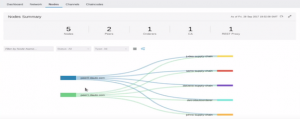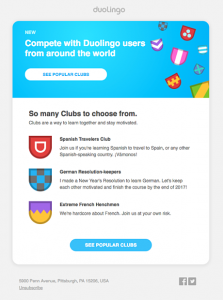OK, you’ve done it, your website is up – hurrah! But, you know by now that building a website and hitting the button to turn it live is just the start.
 Websites are great – you can showcase your products and services, encourage people to come knocking at your door. But, there’s a downside too, isn’t there? Especially when you get it wrong – because the damage is so public and that just makes you look rubbish.
Websites are great – you can showcase your products and services, encourage people to come knocking at your door. But, there’s a downside too, isn’t there? Especially when you get it wrong – because the damage is so public and that just makes you look rubbish.
If you’re not keeping your website updated, or ensuring that it’s accurate and mistake free, then you could well be damaging your reputation and putting off the very people you want to attract. You can try your hardest to drive traffic to your website but that is no good if:
- your content just isn’t interesting or engaging
- your content looks shabby or is not up-to-date
- your website is just making it difficult for the very people you want to attract to ‘check you out’, or is even blatantly turning them away
Are you shooting yourself in the foot when it comes to your website?
If your content is shabby and out of date then maybe you’d be better off not having a website at all. It’s easier, I think, to spot the issues on someone else’s website and an objective view of what you are putting out there to the world is well worth thinking about.
I’ve reviewed a lot of websites recently (over 250 in fact) and here are my big takeaways from that exercise about the things I’ve seen that are turning people off, sending them away and downright urging them never to visit the website again.
25 mistakes that are strangling your website
You’re shouting that your website is unloved
1. Empty sections
Nothing shouts ‘lazy’ louder, I think, than empty sections. You have a great section heading, it invites people in and then there’s nothing there. It’s like having a shop – looks great from the outside but there’s nothing there when you get inside. I get really annoyed when I see that on websites – it wastes my time and is so unnecessary. If you don’t have any content for a section then do not make that section ‘live’, simple as that. Just wait until you have something of value you can share.
2. Out of date news
I have been amazed by the number of websites I’ve seen recently that have a news section but the news is very old. It’s all in the title – it’s called ‘news’ not ‘olds’. Visitors click on the news section to find out more about what is going on. If the latest news is months or even years old then that just looks shabby. And, it disrespects your website visitor – you are offering them the promise of news but not delivering and that’s not good.
3. News visitors won’t be interested in
And, some news just isn’t relevant or interesting. You really do have to set aside some time to think about who is coming to your website, who you want to come to your website and what they will be intersted in, what value you can add. And, news overload can be just as bad. I saw a website recently which had links to different news feeds. That in itself is not necessarily a bad thing but there were about twenty different news categories listed which is just a bit crazy.
4. Abandoned blogs
You might well set off all enthused about your blog but it can be tough to keep the content flowing. But, in all honestly, if your blog hasn’t been updated in several months, or even years, or only gets a bit of love and attention every now and again then that looks pretty poor.
Now, don’t get me wrong, putting out shabby content each and every week for the sake of it doesn’t cut it either. But, a blog once every two weeks or once a month is doable. You don’t need to go mad – you just need to get it done. And, if getting your blog written and published never makes it to the top of the list then do yourself a favour – either let it go or hire someone to produce content for you that you can schedule in advcance.
5. Sporadic newsletters
It’s another of the tell-tell signs that your website is more of a hindrance than a help. It shouts loud and clear – ‘interested and organised once, but not anymore’.
You’re making it difficult for visitors to find what they need
6. You are hiding contact information
This one drives me so potty. So many websites seem to want to drive people to their social media networks and make it difficult for website visitors to call or email. Tell me, why would yo do that? Isn’t a website to showcase what you do, how you can help people and to encourage contact and engagement? Maybe I’m missing something but if your website is for business then why, oh why, wouldn’t you make it as easy as possible for somebody to get in touch?
If I can’t find the contact details on a website when I want to get in touch then I just click close and never bother coming back. It’s like having a shop with an open sign but finding the door is locked. To be honest, it just makes me want to slap my head with a wet flannel.
7. Poor navigation
For the websites I was reviewing I was primarily looking at whether they had news sections or blogs. For some sites trying to find the relevant sections was a bit like pulling teeth. There does need to be a logic to it but you need to ensure it’s not overwhelming either. Twelve different tabs at the top of the page is quite off-putting for me.
Your turning visitors away
8. No reason for visitors to return
It’s rare that someone will come to your website and buy immediately. They probably visit, check you out, look elsewhere, come back again, and so on. If what you have on your website is very basic – that is, there is no depth to it or no reason for people to connect with you then you are making it very difficult for them to want to return.
9. Damaging content
OK, classic of classics. I came across a website that featured a news story which dated back a number of years. The story included mention of a well known personality who attended the event – that famous figure is now behind bars for being a convicted sex offender. I think, personally, it’s a good idea to take the story down. Or, to find up-to-date news so that that particular story isn’t the top story you see when you hit the news section.
10. Design that makes you want to cry
Now, I’m not a designer but even if you are a one man band you can learn some basic skills yourself to create a website that doesn’t look hideous. There are so many free resources out there to help you put something together that will get your message across. It doesn’t need to look fancy but it doesn’t need to look like it’s been created by a six year old either.
11. The wrong photography
Yes, a picture paints a thousand words and there’s always an interesting debate to be had about photography. It’s not always about having professional shots. They, of course, can look great but it’s about the message you are conveying with your photography and how appropriate the images are. Stock photography looks just that and sometimes it can work but sometimes it looks plain awful, especially those shots of people round a table.
12. No news or blog
I’ve come across webites that don’t have a news section or a blog. Personally, I find that a bit off putting. I like to get a feel for the business or organisation through the content they put out there. It’s a good gauge of how engaged they are and you can also get a good feel for how professional they are and their intention to provide value.
13. Dated testimonials from the distant past
You don’t often see testimonials that are dated and for a very good reason. Unless you are flagging them in relation to a specific event then having testimonials on your website that are dated can cause a bit of an issue. I looked at a website recently which listed testimonials dated as 2010. They stood out like a sore thumb because there were no other testimonials that were more current. That undermines rather than builds trust, don’t you think?
14. Testimonials not attributed fully
Of course, there’s a caveat. For some types of business or service then maybe people don’t want to be named in full in testimonials. But, where that isn’t the issue then full names, business names, part of the country all help with building trust. Anyone can make up a testimonial and slap ‘Nigel T’ next to it. But, putting fuller details gives you credibility and that is the name of the game.
15. Broken links
OK, so sometimes this is going to happen. But, it’s easy to check for the main sections and just shouldn’t be allowed for links to the ‘contact us’ section. There are free online tools you can use to ensure that you stay on top of broken links. Check out http://www.brokenlinkcheck.com/ and http://www.deadlinkchecker.com/ – free online tools you can use to find broken links.
16. Jargon overload
Yes, industry jargon is probably a no-no. It all depends on the audience you want to target. Nothing beats clear, concise and jargon free copy. That comes from having short punchy sentences using language that is easily understandable. Jargon just puts people off so banish jargon from your website once and for all.
17. About pages that suck
I’ve been amazed by the number of ‘about us’ pages that really fail to do their job. Sometimes they are full of jargon but often they have copy slapped down that hasn’t been given much thought. If it’s difficult for your website visitor to work out what you do then what chance do you have of convincing them you are the right business to help them?
You’ve made it difficult for visitors to access your content at all
18. Not set up for mobile
OK, for this one you might need a bit of web tech help. I don’t think it’s too difficult to sort out. It’s definitely worth testing how your website appears on mobile devices. The usage of mobile for accessing the internet will only increase and if your website isn’t set up for it then you are missing out. It’s a bit like opening the door to your shop and then slamming it in your visitor’s face, not nice.
19. Slow loading time
I can’t remember the research about how much time you have to grab someone’s attention when you land on their website but long load times won’t do you any favours. Very few people will bother to try again so you are just putting another hurdle in the way of attracting and connecting with the right people.
You’re confusing website visitors or, even worse, annoying them and making them angry
20. Lack of a clear message
Please, please, please, there must be a line or two somewhere on your website, preferably on the home page, that says something about what you offer, who you help. If you are leaving it to your website visitor to work it all out then go and hang your head in shame.
21. Video that starts automatically
OK, one of my all time pet hates. I work in the evenings, sometimes. I have kids. I don’t want videos blaring out at some silly time and waking the kids. I want to choose whether to watch a video or not. I’m not adverse all the time, I just want the choice.
22. SEO overload
I’m a human, I want to read content that I understand. Keyword stuffing is horrible, obvious and just turns me off.
23. Pop ups every ten seconds
I’m a reasonable person. A pop up or two isn’t a problem. In fact, although they can be annoying I know that they do work. I use them on my own website. I think the issue is more around how frequently they pop up and how that can move someone from being interested to ‘I’ll never visit that website again.’ I visited a website recently and had exactly that experience. Every few seconds a pop up appeared. I couldn’t access the content I wanted to read because I was being interrupted ever few seconds. So, I left the site – never to return, that’s a shame.
You’re missing marketing opportunities
24. No social sharing buttons on your blog
If you’ve got a blog with great content then why wouldn’t you want to share that content, to get as many eyeballs on it as possible? Your blog is a great marketing tool – you can use it to provide value to people who sign up for your ebook or newsletter, to connect and engage with contacts on social networks, as a tool to support your networking. And, if people find it useful content then you are doing them a disservice by not allowing them to share it with their own contacts.
25. It’s all about you and not about them
And, finally, just stop and ask – what do website visitors want from the site? It’s not about you, it’s about them. If it’s all about you then you’re missing a very important part of the picture – the reason visitors are coming to your website.
Get it sorted
Now, let’s be honest. Keeping a website in great shape does take time and effort. And, you just have to accept too that your website will never be perfect. There are bound to be glitches and typo errors and that’s just the way it goes – you shouldn’t get a stress head on about that.
But, there are some things that really will damage your reputation. If you have a blog or news section where the most recent content dates back several months, or maybe a year or further, then that just looks plain shabby and reflects badly on your business. If that’s your website then I urge you to get it sorted.
When someone lands on your website and feels that it has been abandoned then that paints their view of you and your business and of the products or services, and customer service, you offer. If you don’t take care of your website then visitors might well be asking whether, as a client, you’ll treat them in the same way.
OK. Rant. Over
In a nutshell: your website is your public face, your shop front. If you invite people in but then make it difficult for them to want to do business with you by showcasing old, shabby content, then you are most certainly damaging your reputation.
Digital & Social Articles on Business 2 Community(33)
Report Post






